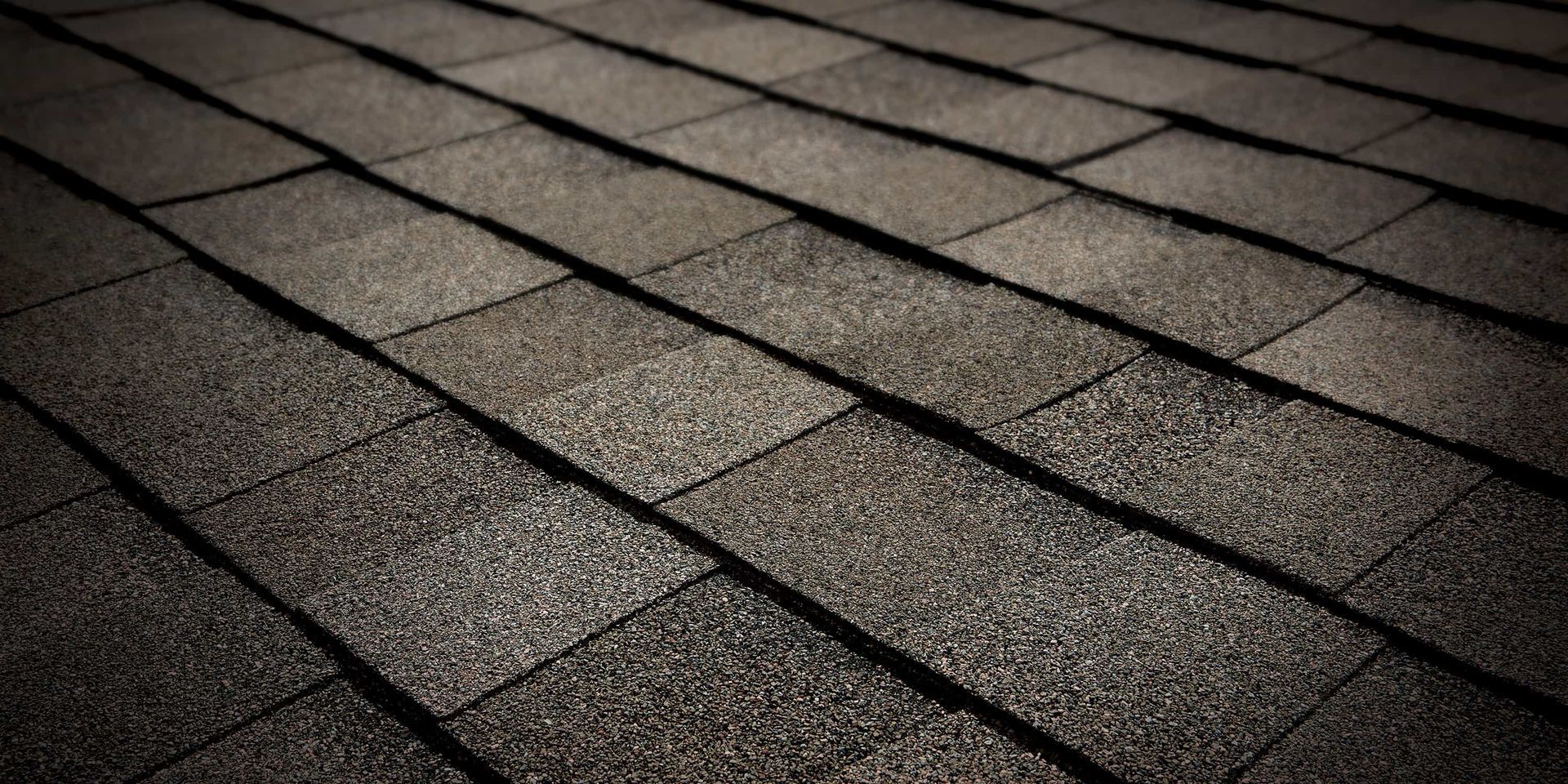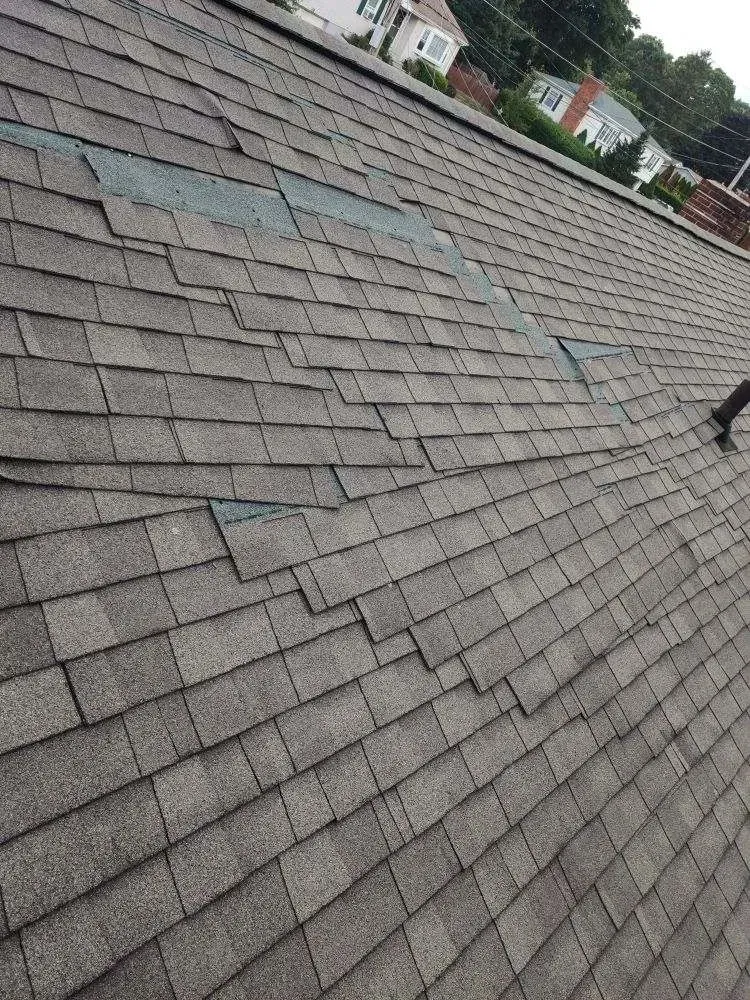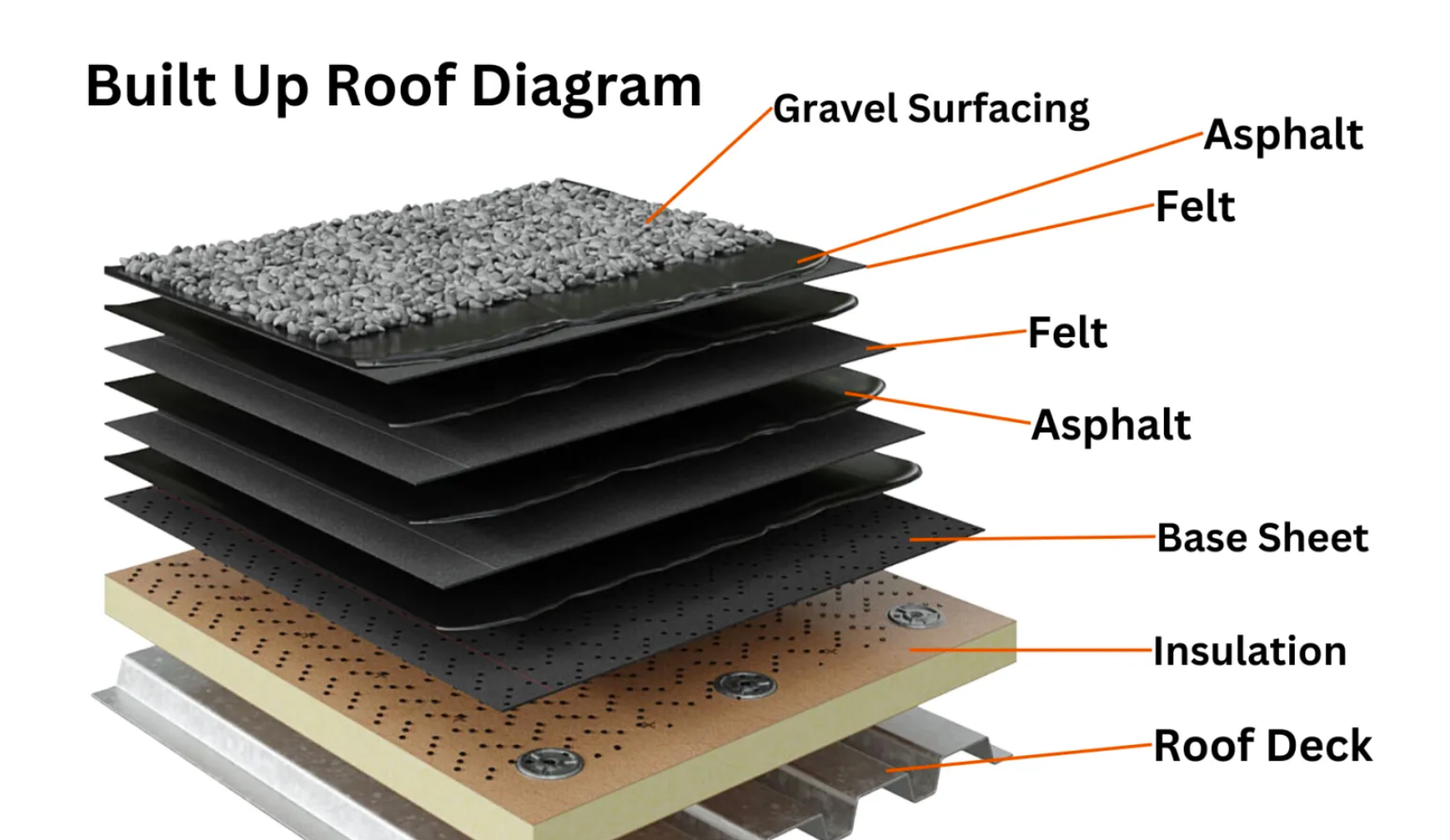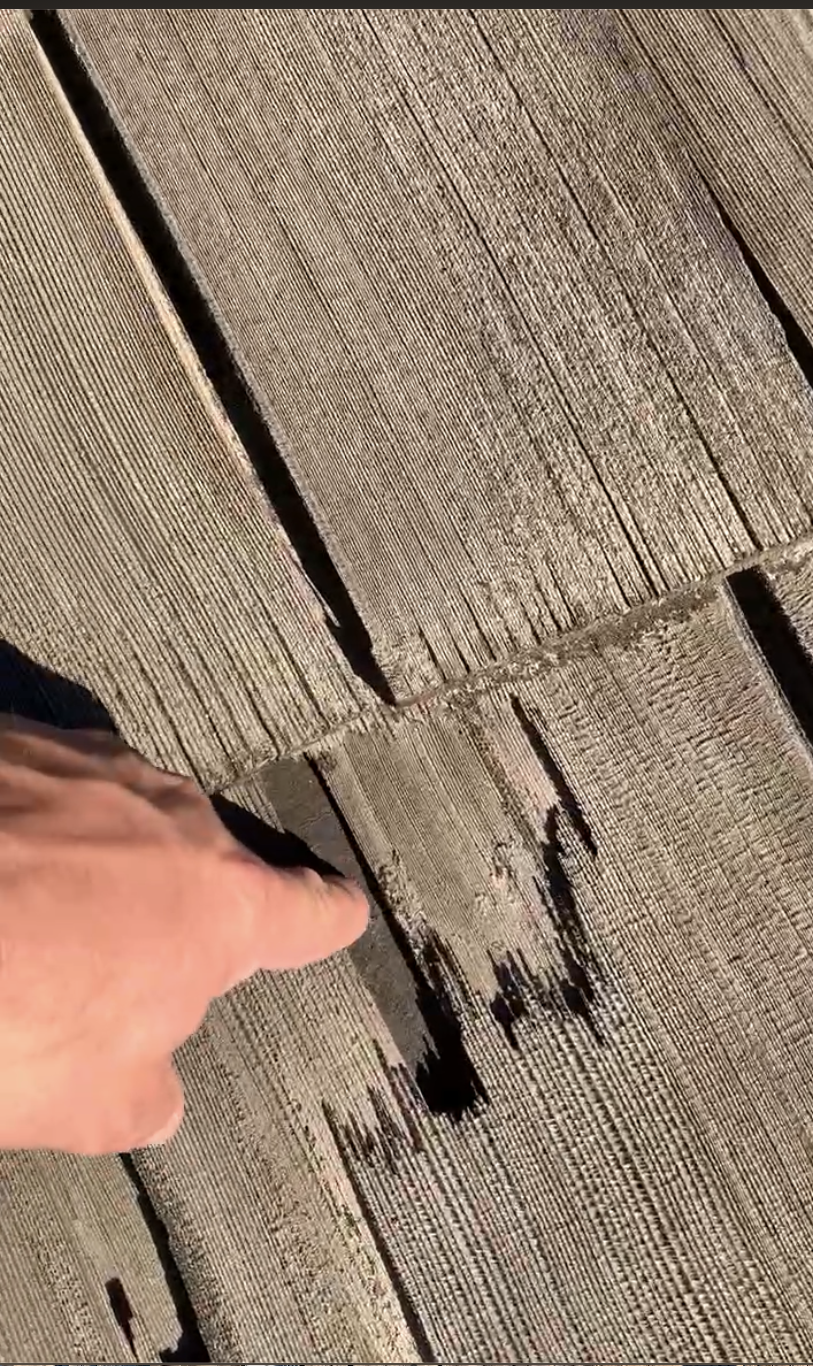Debunking Underlayment as the main roof system
Brandon Woodcock • January 5, 2025
Debunking the Myth: Why Underlayment Isn’t a Roofing System

In the roofing industry, misconceptions can spread quickly, and one of the most misleading is the claim that underlayment alone constitutes a roofing system. This misunderstanding has led to confusion among homeowners and even some professionals.
Underlayment is a critical component of any roofing system, regardless of location. However, it is not designed to be a standalone solution. Whether you live in Yakima, Washington, or anywhere else, a complete roofing system is essential for long-term protection and durability. Let’s break down what underlayment does, how it fits into the broader roofing system, and why relying solely on underlayment is a recipe for disaster.
What Is Roofing Underlayment?
Roofing underlayment is a layer of material installed beneath the roof covering (shingles, tiles, or metal panels) and above the roof deck. Its primary purpose is to provide an additional barrier against water infiltration, especially during construction or if the outer layer is damaged.
Underlayment serves as temporary protection during the roofing process and acts as a secondary defense once the roofingDebunking the Myth: Why Underlayment Isn’t a Roofing System
In the roofing industry, misconceptions can spread quickly, and one of the most misleading is the claim that underlayment alone constitutes a roofing system. This misunderstanding has led to confusion among homeowners and even some professionals.
Underlayment is a critical component of any roofing system, regardless of location. However, it is not designed to be a standalone solution. Whether you live in Yakima, Washington, or anywhere else, a complete roofing system is essential for long-term protection and durability. Let’s break down what underlayment does, how it fits into the broader roofing system, and why relying solely on underlayment is a recipe for disaster.
What Is Roofing Underlayment?
Roofing underlayment is a layer of material installed beneath the roof covering (shingles, tiles, or metal panels) and above the roof deck. Its primary purpose is to provide an additional barrier against water infiltration, especially during construction or if the outer layer is damaged.
Underlayment serves as temporary protection during the roofing process and acts as a secondary defense once the roofing system is complete. However, it cannot replace the outer roof covering, which shields the underlayment from the elements.
Common Types of Underlayment:
Asphalt-Saturated Felt: Traditional, cost-effective, but less durable and prone to degradation in extreme conditions.
Synthetic Underlayment: Lightweight, tear-resistant, and better suited for variable climates.
Rubberized Asphalt Underlayment: Premium waterproofing for areas prone to ice dams or heavy rain.
Why Underlayment Isn’t the Whole System
Underlayment is not a substitute for a complete roofing system, and here’s why:
1. Lacks Durability and Longevity
Underlayment is not designed to withstand prolonged exposure to the elements. Sunlight, rain, wind, and snow can quickly degrade it if left uncovered.
Without a protective top layer like shingles or tiles, the underlayment’s lifespan is significantly shortened.
2. Provides Limited Protection
Underlayment helps prevent water infiltration but cannot handle the full burden of protecting a home. The outer roof covering—shingles, tiles, shakes, or metal—is the primary defense against weather.
Roofing nails used to attach shingles penetrate the underlayment, creating potential pathways for water to seep through if it gets under the shingles. This is why the outer roof covering is essential to ensure water doesn’t reach the roof deck.
3. Doesn’t Meet Manufacturer or Building Standards
Most roofing material manufacturers specify underlayment as part of a system, not a standalone solution.
Building codes universally require complete roofing systems, including ventilation, flashing, and durable top layers.
The Temporary Role of Underlayment During Roofing or Re-Roofing
Underlayment plays a critical role during the roofing process, ensuring that the home remains protected while the roof is being installed or replaced.
How Underlayment Protects During Construction:
Quick Dry-In for Interior Work:
Underlayment shields the roof deck from weather, allowing contractors like electricians, drywallers, and painters to continue their work without delays caused by leaks or exposure.
Protection During Re-Roofing:
When replacing an existing roof, underlayment prevents moisture damage to the exposed roof deck until the new roof covering is installed.
Temporary Yet Essential:
While underlayment provides short-term protection, it is not designed to be exposed indefinitely. Completing the roofing process promptly ensures the integrity of the underlayment and the entire system.
Lessons from Other Regions: A Cautionary Tale
In some areas, such as Las Vegas, roofing practices differ significantly. For example, it is common on tile roofs not to install pipe flashings, allowing water to run underneath the tiles and rely solely on the underlayment. While this might work temporarily in dry climates, it can lead to long-term issues.
We’ve seen firsthand how this approach can backfire. A homeowner in Las Vegas contacted us after receiving a bid from a local contractor to tear off her tiles, install new underlayment and battens, and reinstall the old tiles. However, this plan would not have addressed the root problem—the lack of proper flashing and drainage—and would have left her with the same issues. Instead, a complete roofing system addressing all components, including flashing, was necessary to prevent future water infiltration.
The lesson here is clear: underlayment alone, even with new materials, is not sufficient to resolve systemic roofing issues. Comprehensive solutions are critical for long-term durability.
The True Definition of a Roofing System
A complete roofing system is a combination of multiple components working together to protect a home. These components include:
Roof Deck: The structural foundation of the roof, typically made of plywood or OSB.
Underlayment: Provides a secondary barrier against water infiltration.
Roof Covering: The visible top layer, such as asphalt shingles, tiles, or metal panels, which serves as the primary defense against weather.
Flashing: Metal pieces that seal edges and joints, preventing water entry at vulnerable points like chimneys and vents.
Ventilation: Ensures proper airflow to prevent moisture buildup and extend the life of the roof.
Underlayment: A Universal Need
The misconception that underlayment can function as the sole roofing system often arises in areas with mild climates. However, even in regions with limited rainfall or temperature extremes, underlayment is not designed to withstand prolonged exposure. Without the protection of shingles, tiles, or metal panels, it will deteriorate rapidly, leaving the home vulnerable to leaks and damage.
Whether in Yakima, Washington, or any other location, a complete roofing system is essential to ensure long-term durability and weather resistance. Every component of the roof has a specific role, and underlayment alone cannot meet the demands of protecting a home.
The Right Way to Approach Roofing
For homeowners everywhere, a complete roofing system is the only reliable way to ensure long-term protection and durability.
What to Demand from Your Roofing Contractor:
Proper Installation: Ensure they follow manufacturer guidelines and include all components of a roofing system.
High-Quality Materials: Select underlayment and roof coverings that can withstand local weather conditions.
Regular Inspections: Seasonal weather changes can take a toll on your roof, so schedule inspections to catch issues early.
Conclusion: Don’t Fall for Half-Truths
Underlayment is an essential component of any roofing system, but it’s not the roof itself. Misleading claims can leave homeowners vulnerable to premature roof failures and costly repairs. A complete roofing system—including the roof deck, underlayment, shingles or tiles, flashing, and ventilation—is necessary to ensure long-term protection and durability.
No matter where you live, cutting corners on your roofing system isn’t an option. Choose a contractor who values quality, transparency, and the importance of a full roofing system. Protect your home with a roof built to last.

Roof repairs can be a significant expense, especially when damage occurs unexpectedly. For Yakima homeowners, understanding if and when insurance will cover roof repairs is crucial to avoid unnecessary financial strain. At Yakima Roofing and Remodeling, we’re here to help you navigate the complexities of insurance claims and ensure your roof gets the care it needs. When Does Insurance Cover Roof Repairs? Insurance coverage for roof repairs typically depends on the cause of the damage and the specifics of your policy. Most homeowner’s insurance policies cover sudden and accidental damage, such as: • Storm Damage: High winds, hail, or falling branches that damage your roof. • Fire: Damage resulting from a house fire or wildfire. • Water Damage: Leaks caused by storm-related damage (not long-term wear and tear). However, insurance generally does not cover damage caused by neglect, improper installation or lack of maintenance. For example, if a leak develops over time due to old shingles or poor ventilation, you may be responsible for the repair costs. Common Roofing Claims in Yakima Yakima’s diverse weather patterns—ranging from summer heat to winter storms—pose unique challenges for homeowners. Insurance claims in the area often arise from: • Hail Damage: Even small hailstones can dent shingles or break tiles. • Wind Damage: Strong winds can tear off shingles or cause debris to impact the roof. • Ice Dams: Accumulated snow and ice can lead to water backing up under shingles, causing leaks. These weather-related issues can be covered by insurance if documented and reported promptly. How to File a Roof Insurance Claim Filing a roof repair claim can be overwhelming, but with the right approach, it’s manageable. Follow these steps: 1. Assess the Damage: After a storm or incident, inspect your roof for visible signs of damage, such as missing shingles or sudden leaks. 2. Document Everything: Take clear photos of the damage, including interior water stains or other related issues. 3. Contact Your Insurance Company: Notify your insurer as soon as possible to start the claims process. 4. Hire a Professional Roofing contractor for an Inspection report: Insurance companies often require a detailed assessment from a licensed roofing contractor. 5. Work with a Trusted Contractor: Partner with a local expert, like Yakima Roofing and Remodeling, who understands Yakima's unique climate and can advocate for the repairs your home needs. How Yakima Roofing and Remodeling Can Help Navigating an insurance claim can be daunting, but you don’t have to do it alone. At Yakima Roofing and Remodeling, we specialize in helping Yakima homeowners with their roofing needs, including insurance claims. Here’s how we can assist: • Comprehensive Inspections: Our team provides detailed assessments to identify storm damage and ensure it’s properly documented for your claim. • Insurance Advocacy: We work with your insurance adjuster to ensure you receive fair coverage for necessary repairs. • Expert Repairs and Replacement: Once your claim is approved, we provide high-quality roof repairs or replacements to restore your home’s integrity. Proactive Tips for Homeowners To increase the chances of your insurance covering roof repairs, consider these proactive steps: • Schedule Regular Inspections: Routine checks can catch issues before they become major problems. • Document Your Roof’s Condition: Keep records of inspections and maintenance to demonstrate diligence if a claim is needed. • Act Quickly After Storms: Promptly address any damage to avoid further complications. Your Yakima Roofing Experts Are Here to Help If you’re facing roof damage and wondering if insurance will cover the costs, let Yakima Roofing and Remodeling guide you through the process. With our local expertise and commitment to excellence, we ensure your home is protected, and your claim is handled with care. Contact us today for a consultation and let us take the stress out of roof repairs and insurance claims. Things to consider: Insurance companies will not typically replace an entire roof in the damage is localized to one area, side or roof deck. The entire roof may be re-done if the roof product that was installed is no longer available Or Damages are widespread on all decks or most decks.

TPO vs. PVC Roofing Membranes: What's Right for Your Building in Yakima, Washington? When it comes to commercial roofing in Yakima, Washington, choosing the right membrane is essential for ensuring long-term durability, energy efficiency, and cost-effectiveness. Two of the most popular roofing materials in the industry today are TPO (Thermoplastic Olefin) and PVC (Polyvinyl Chloride) membranes. Both offer unique advantages, but they also have their differences. In this article, we’ll dive into the key features of each, helping you determine which roofing membrane is the best choice for your building in Yakima. What is TPO Roofing? TPO is a single-ply roofing membrane made from a blend of polypropylene and ethylene-propylene rubber. This roofing material is typically white or light-colored, making it reflective and energy-efficient, which is particularly beneficial for buildings in Yakima, Washington, where hot summers and UV exposure can strain roofing systems. TPO is known for its affordability, ease of installation, and resistance to UV rays, making it a popular choice for commercial buildings in Yakima, including warehouses, schools, and office buildings. Pros of TPO Roofing in Yakima: Cost-Effective: TPO membranes are generally less expensive than PVC, making them a great choice for businesses in Yakima on a budget. Energy Efficiency: The light color and reflective properties of TPO membranes help reduce cooling costs in Yakima, where energy-efficient roofing can lead to significant savings during the warmer months. Environmentally Friendly: TPO is considered a more eco-friendly option compared to other roofing materials. It’s made from a blend of recycled materials and is fully recyclable at the end of its lifespan, making it a sustainable choice for Yakima businesses. Easy Installation: TPO roofing is lightweight and flexible, making it easier and faster to install, which can help reduce labor costs, an important factor for commercial roofing projects in Yakima. Cons of TPO Roofing in Yakima: Long-Term Durability: While TPO is resistant to UV rays and ozone, its long-term durability can be inconsistent. Over time, TPO membranes may become brittle and more prone to punctures or tears compared to other materials. Fire Resistance: TPO is not fireproof. In a recent test comparison between TPO and PVC, we found that while TPO will continue to burn once ignited, PVC has superior fire resistance. When exposed to flame, PVC will stop burning as soon as the flame is removed, offering a higher level of safety, especially for commercial buildings in Yakima. What is PVC Roofing? PVC is a single-ply roofing membrane made from a combination of plasticized polyvinyl chloride and other additives. Known for its durability, strength, and resistance to chemicals, PVC is a high-performance roofing option. It is often used in Yakima, Washington, for commercial buildings that require extra protection, such as those with high traffic, exposure to harsh chemicals, or extreme weather conditions. Pros of PVC Roofing in Yakima: Durability and Longevity: PVC roofing membranes are known for their long lifespan and durability. These membranes are highly resistant to punctures, tears, and chemical exposure, making them ideal for environments in Yakima that experience harsh weather or heavy foot traffic. Heat and Fire Resistance: PVC is highly resistant to heat, fire, and UV damage, which makes it particularly suitable for buildings in Yakima, where extreme weather conditions can take a toll on roofs. In our fire test, PVC exhibited excellent fire-resistant properties: it stopped burning as soon as the flame was removed, offering a level of safety that TPO cannot match. Chemical Resistance: PVC membranes are excellent for buildings with roofs that come in contact with harsh chemicals, such as restaurants, factories, or facilities with chemical storage in Yakima. Energy Efficient: Like TPO, PVC roofing membranes are reflective, reducing the need for air conditioning and lowering energy costs in Yakima. Cons of PVC Roofing in Yakima: Higher Initial Cost: PVC membranes are typically more expensive than TPO, both in terms of material and installation costs. Limited Flexibility: PVC is a more rigid material, which can make installation more challenging in certain applications, particularly when dealing with complex roof designs or repairs. Environmental Impact: While PVC is durable, it is not as environmentally friendly as TPO, as the production and disposal of PVC can have a greater environmental footprint. Key Differences Between TPO and PVC Roofing Membranes for Yakima Buildings

In this article we will look at the important aspects to determine if your composition roof is going to last for many years to come or if it’s time to start planning for a new roof. This article is to give you a shallow understanding of what to look for. In many cases a professional in your area may need to be called. In Yakima, Washington roofing contractors may utilize different practices then in other parts of the country like, Las Vegas, NV. In Las Vegas, many roofing contractors believe that the underlayment is the roof system and will not install the roof as we would here in Yakima, WA. Just as with inspecting a shake or wood shingle roof, the south facing decks that are exposed longer in the day to the sun will have the most damage. We always begin with the south facing decks, if they are failing then the rest of the roof won’t be far behind. To determine if the roof is failing, we need to look at the following: 1. Wall, Valley, Vent and pipe flashings. 2. Roofing shingles. 3. Roof fasteners. The first thing we will looks at are the flashings. Some roofing contractors will bid to use the cheapest materials possible to keep the price down and win your project. Check

In this article we will teach you how to inspect your shake roof to determine the remaining life. You will have the understanding and confidence to decide if your roof is in a failing state or if it has years of life remaining. To begin we start with a ground inspection. Ground Inspection From the ground we can often determine if the condition of a roof. It's very typical that by the time a customer deems their roof in bad enough shape to call us for an estimate of a new roof. In most cases the roof has been failing for years without them knowing. They haven't experienced any leaks that they know of, however the roof substrate has been suffering delamination for years. Once the roof is removed the rotting substrate must also be replaced in areas that leaked, adding cost that could have been avoided. From the ground we recommend doing a walk around of the whole building. A visual inspection of each roof deck to note the condition of the shakes or wood shingles. The south facing roof decks will typically face the sun the longest each and will be in worse shape then the other decks.












